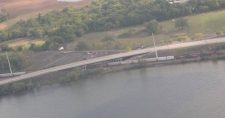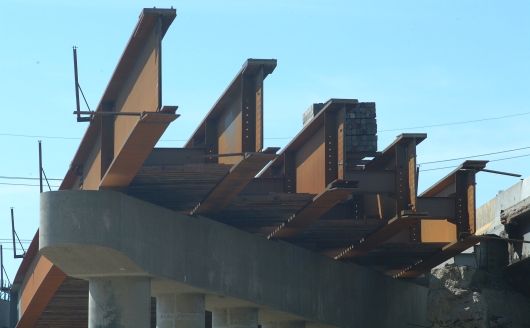INFORMATION

This 400-foot span of Lake Village Bridge, IL, was fabricated from a steel developed by Northwestern University (NUCU 70). It is so corrosion-resistant that no painting is needed, thus saving the State $300,000.
News & Events
Tenure-Track Assistant Professor in Multifunctional Infrastructure Materials
Northwestern University’s Department of Civil and Environmental Engineering (CEE) and Department of Materials Science and Engineering (MSE) jointly seek an outstanding individual in the area of multifunctional infrastructure materials.

Introduction
Infrastructure refers to constructed physical facilities which support the day-to-day activity of our society and provide means for distribution of resources and services, transportation of people and goods and communication of information. Examples include roads, bridges, water and sewer systems, electric power production, pipelines and more.
Infrastructure plays a key role in the use of energy worldwide; in the US, buildings represent 40% of all energy consumption and 72% of electricity use and are responsible for about 36% of CO2 production (APS, 2008). While past development of infrastructure materials has been driven primarily by their load-carrying capability and durability, now issues of sustainability and energy efficiency should be at the forefront of any new infrastructure projects. Multi-functional materials -- self-healing concrete and steel, CO2-absorbing cement and asphalt, morphing blades for wind turbines, anti-freezing pavement, etc. - are the enabling technologies for building sustainable infrastructures.

